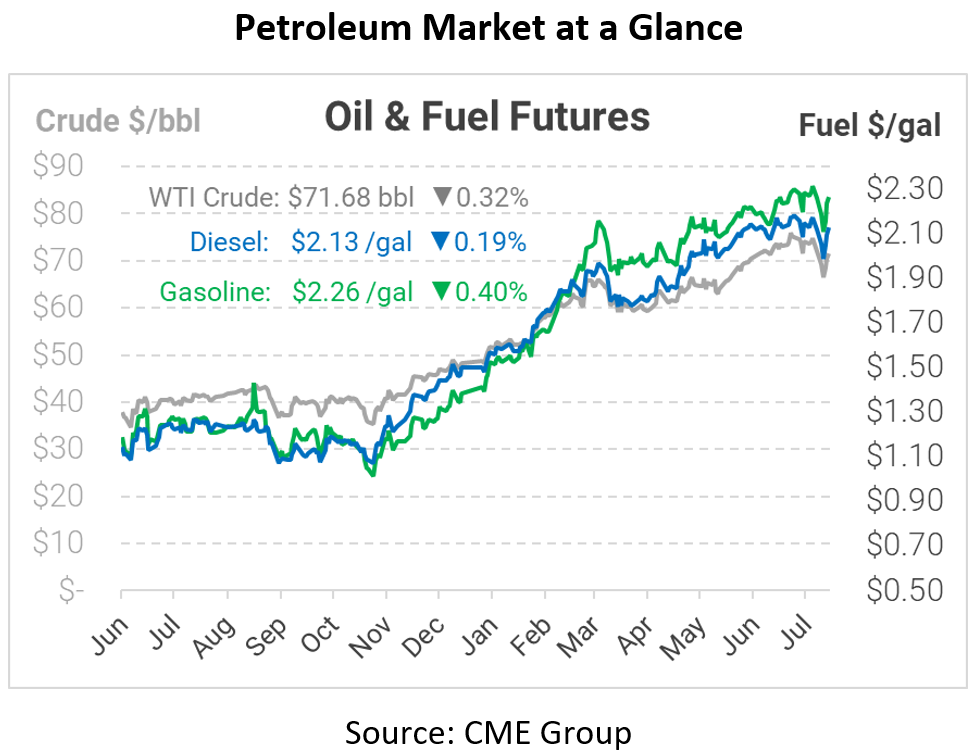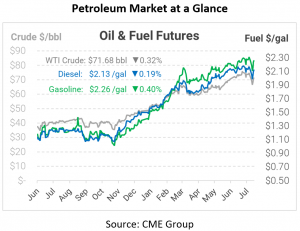
California’s High Fuel Prices May Be Heading Even Higher
Oil prices bounced back, with crude oil climbing $1.60 yesterday and fuel prices seeing 5 cent gains. The major swings this week have been the result of old news – COVID case rates, OPEC production, and climbing demand. Even old news, though, can significantly drive prices. While the dominant narrative this year has been strong demand growth in 2021, traders briefly shifted focus to the numerous concurrent reports of rising OPEC production and spiking COVID cases. Upon further reflection, traders realized OPEC’s 400 -kbpd increases may not be enough, leading them to rush back into the market.
In California, biodiesel buyers may see their total fuel costs increase soon as the state has amended its ADF additive requirements. The new formulation is difficult to manufacture, so the change is expected to cause a steep increase in per-gallon additive costs – as much as 15-20 cents per gallon. All California diesel buyers with non-SCR fleets using 6% blends of biodiesel (commonly referred to as B10) or higher must use the additive to reduce NOx emissions.
However, consumers can use renewable diesel to avoid the higher cost, since the ADF additive is not required when using more than 55% RD blends with biodiesel. For example, customers using an R90/B10 (90% renewable diesel, 10% biodiesel) or R80/B20 blend will continue enjoying the favorable tax economics while also avoiding the high ADF additive cost. Another option to avoid the costly ADF additive includes filing exemptions, which Fleets with newer SCR engines qualify.
In other Californian news, northern California recently ruled that two refineries had to slash their emissions, the latest action to curb fossil fuels in the state. Some refiners have already announced plans to transition to shut down petroleum refining and switch to renewable fuel production, while others will need to spend hundreds of millions (or billions) to comply. Expensive capital costs will eventually trickle downstream from refiners to suppliers to consumers, so expect higher prices as refiners produce lower-emission fuels.
This article is part of Daily Market News & Insights
Tagged: ADF additive, Biodiesel, California
MARKET CONDITION REPORT - DISCLAIMER
The information contained herein is derived from sources believed to be reliable; however, this information is not guaranteed as to its accuracy or completeness. Furthermore, no responsibility is assumed for use of this material and no express or implied warranties or guarantees are made. This material and any view or comment expressed herein are provided for informational purposes only and should not be construed in any way as an inducement or recommendation to buy or sell products, commodity futures or options contracts.






